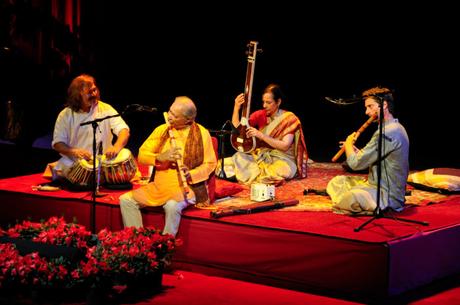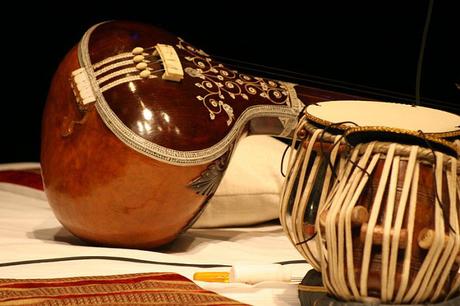
Indian classical music is the art music of the Indian subcontinent. The origins of Indian classical music can be found in the Vedas; which are the oldest scriptures in the Hindu tradition dating back to 1500 BCE. The Samaveda was derived from the Rigveda so that its hymns could be sung as Samagana.Music can be a social activity; but it can also be a very spiritual experience. Ancient Indians were deeply impressed by the spiritual power of music; and it is out of this that Indian classical music was born. So; for those who take it seriously; classical music involves single-minded devotion and lifelong commitment. But the thing about music is that you can take it as seriously or as casually as you like.

It is a rewarding experience; no matter how deep or shallow your involvement. Many of the Indian classical ragas are derived from (but much more evolved versions of) folk tunes from various parts of India; and most of the other popular and light-classical music forms in India are based on classical music; so how does one distinguish between classical and folk or popular music? Folk tunes tend to be quite simple even when they are lively and colorful. Often they have a limited pitch range of less than an octave. Investigation into the origins of Hindu scripts; and that of our civilization further corroborates the fact that chants go back prior to recorded history.

Notes and scale of swaras; which are the basis of Vedic chants; could not have emerged suddenly during Vedic period. Deductive logic suggests aurally; there is ample proof that some form of music existed even before a script was invented.; Most of our Vedic texts had chants in three notes; but Sam Veda records more complex chants. The variation was in the notes it had three to seven notes. Vedic scholars had developed a very strict scale of swaras; notes and rhythm; and the chants did not deviate from this. Hence Vedic poetry was rather definitive and rigid. Gradually; as Vedic chants gave way to more leisurely notes; swaras as we know them today were developed. The Indian classical music tradition is still there; having survived so many metamorphoses. There are still teachers and disciples all over the country who dedicate a major part their lives to the pursuit of this art; the sadhana of shastriya sangeet.
* Information on the traditional uses and properties of herbs/ animals/ yoga/ places are provided on this site is for educational use only, and is not intended as medical advice. all image credit goes to their Photographers.

Published by Vikas Acharya
I'am a passionate, optimistic & dedicated man who takes up responsibilities with utmost enthusiasm and see to it that I complete my tasks and assignments in time. I'have a great amount of perseverance to achieve my goal. My optimistic and planned approach in things I do is what driving me towards my success. Professional Carrier: Working as an Travel coordinators I am responsible to book tickets, provide research about destinations, plan trips and advise clients. suggest the best times to travel and which activities to enjoy. I am also responsible to reserve rental cars, hotel rooms and schedule tours. As an Travel coordinator I am specialize in regions, countries or client. Knowledge of foreign documentation, such as passports, vaccinations, visas and work permits.As travel planner I spends most of his time in my office environment behind a desk - filling out paperwork, communicating with clients, contacting hotels and booking flights. I'll spend a lot of time on the phone and at the computer. Note: I have collected all the articles from web through various websites, may be some articles are written by me and others are the collection of another website/author, I have no © on some of these images/articles. If you find your image/article which is copyrighted mail me to [email protected] we'll remove them within the next 48hrs. View all posts by Vikas Acharya
